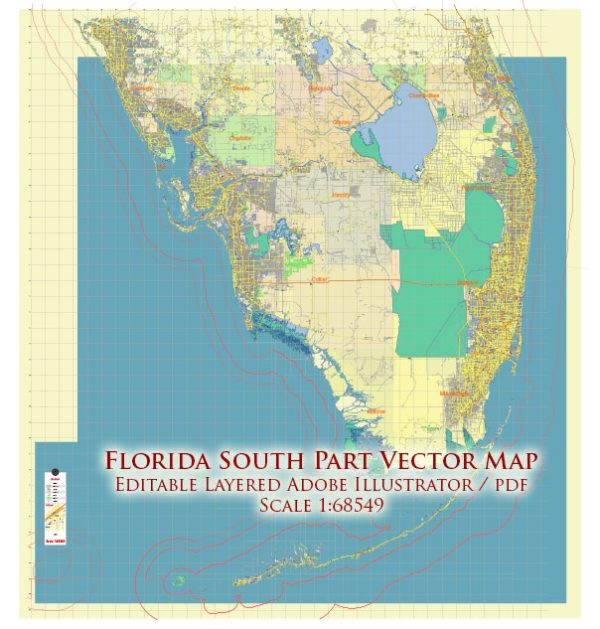The urban development of the southern part of Florida has a rich and complex history that reflects the dynamic interplay of various factors such as geography, climate, economy, and migration patterns. The development of urban areas in South Florida can be broadly divided into different periods, each marked by distinct characteristics and events.
- Pre-European Settlement: Before European exploration and settlement, the indigenous peoples of Florida, including the Tequesta and Calusa tribes, inhabited the region. These Native American communities established semi-permanent settlements along the coast and relied on fishing and agriculture.
- Spanish Exploration and Colonial Period: Spanish explorers, including Juan Ponce de León, were among the first Europeans to reach Florida in the early 16th century. However, it wasn’t until the 18th century that Spain established permanent settlements, such as St. Augustine, the oldest continuously inhabited European-established settlement in the continental United States.
- Territorial Period and Early 19th Century: Florida changed hands between Spain and Britain several times during the 18th and early 19th centuries. After the United States acquired Florida from Spain in 1821, the region experienced increased American migration. The development of urban areas started to gain momentum, and towns like Miami began to emerge.
- Late 19th to Early 20th Century: The late 19th century saw the arrival of the railroad, which played a crucial role in Florida’s urban development. Cities like Miami and Tampa grew as transportation hubs, facilitating trade and tourism. The construction of the Florida East Coast Railway by Henry Flagler in the late 19th century was particularly influential in shaping the urban landscape.
- Land Boom and Bust (1920s): The 1920s brought a significant land boom to Florida, with people flocking to the state in search of economic opportunities and a desirable climate. Miami experienced rapid growth during this period. However, the economic bubble burst in the late 1920s, exacerbated by the Great Depression, leading to a collapse in the real estate market and economic downturn.
- Post-World War II Era: The post-World War II period marked another phase of rapid urbanization in South Florida. The construction of the Interstate Highway System and the expansion of air travel contributed to increased accessibility, further promoting urban growth. The development of the region’s tourism industry also played a pivotal role.
- Hurricane Andrew and Subsequent Growth: The early 1990s brought Hurricane Andrew, a Category 5 hurricane that caused extensive damage in South Florida. The reconstruction efforts that followed spurred economic growth, and the region continued to attract new residents and businesses.
- Contemporary Urban Challenges: Today, South Florida faces challenges related to urbanization, including issues such as sea-level rise, climate change, and infrastructure demands. Cities like Miami have become global hubs for finance, trade, and cultural exchange, but they also grapple with issues like urban sprawl and environmental concerns.
The history of urban development in the southern part of Florida is characterized by a dynamic interplay of factors, and it continues to evolve in response to both local and global influences. The region’s unique blend of cultural diversity, economic opportunities, and environmental considerations contributes to its ongoing significance in the broader context of American urban development.


 Author: Kirill Shrayber, Ph.D.
Author: Kirill Shrayber, Ph.D.